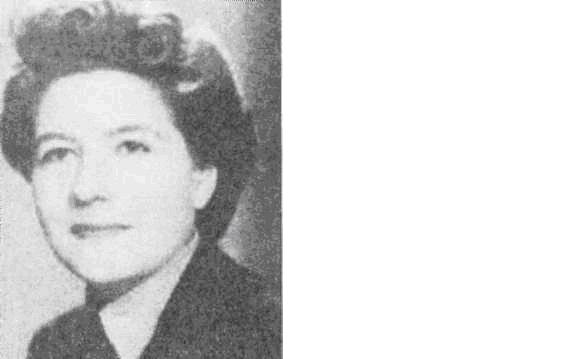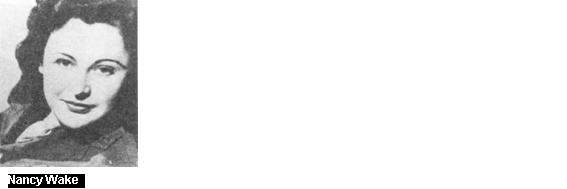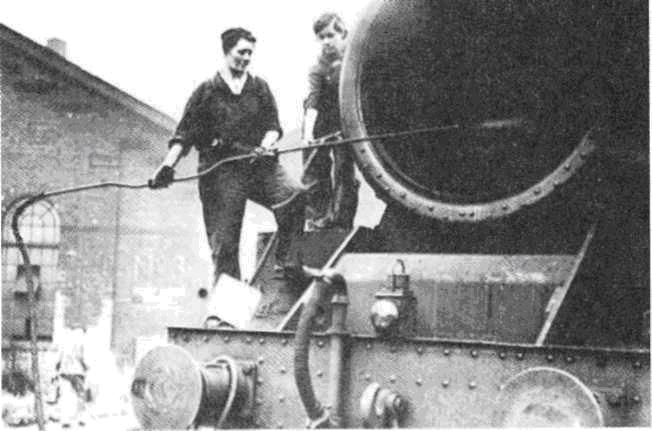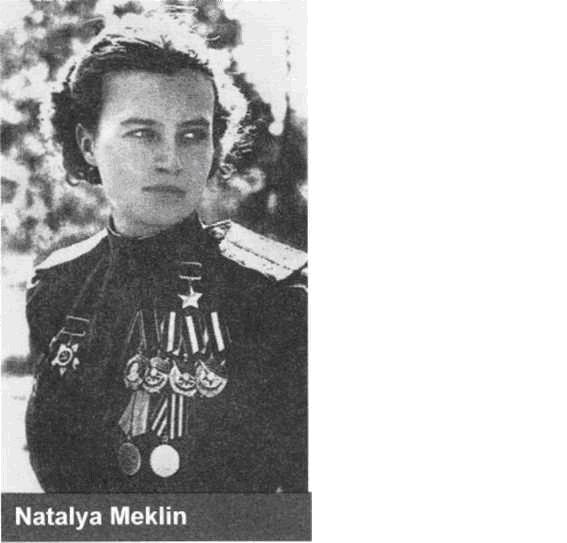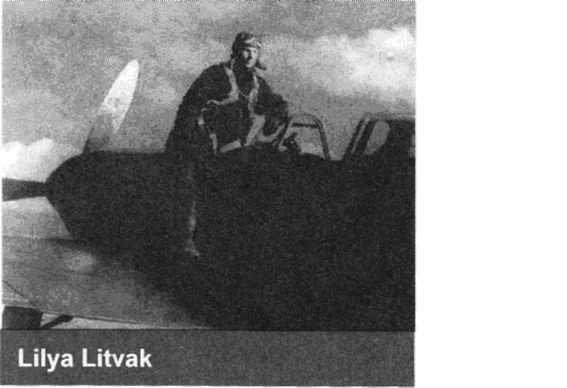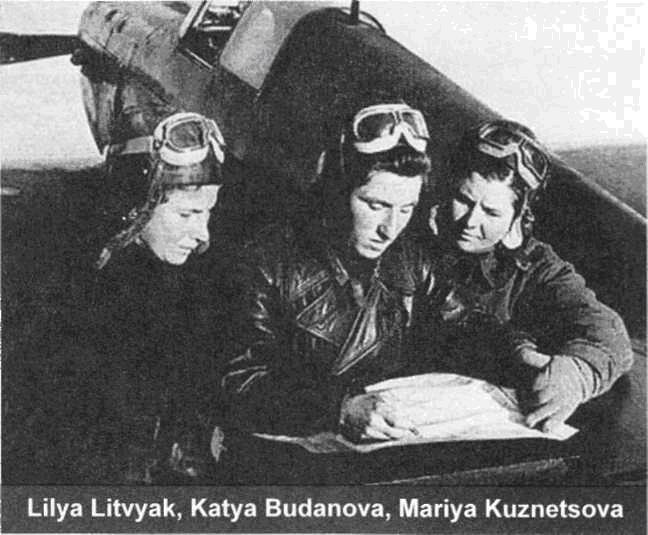British and Russian Women in the II World War
Конкурсный учебный проект British and Russian Women in the World War II.
Contents:
- Introduction.
- Chapter I: British women in the World War II.
- Chapter II: Russian Women in the World War II:
3.1 Soviet women pilots.
3.2 Women in partisan movement
4.Conclusion.
5.Resources.
1.Introduction
World War II was a global military conflict that in terms of lives lost and material destruction, was the most devastating war in human history. It began in 1939 as a European conflict between Germany and Anglo- French coalition but eventually widened to include most of nations of the world. It ended in 1945, leaving a new world order dominated by the United States and the Soviet Union. More than any previous war, World War II involved the commitment of nation’s entire human and economic resources, the blurring of the distinction between combatant and noncombatant, and the expansion of the battlefield to include all of the enemy’s territory. Our issue is highly topical at the moment of celebrating the 65th anniversary of the Great Victory. May 9, Victory Day, is one of the most important holidays in our country. It is also a great holiday for all the countries which fought in the Second World War against fascism. Our research focuses on the participating of the British and Russian women in the war. The hypothesis is: If many countries and a huge number of people were involved in the World War II, there would be women among them. The objects of our research are historical documents, recollections, history books about real events that happened in the World War II. The subject – British and Soviet women who joined the fight to defend their countries from fascism. The purpose of the research is to find evidence about the involvement of British and Soviet women in the work of war. In the process of working we will do following tasks: 1) – to search historical documents; 2) – to examine history books to find information about the researching issue collected. 3) –to analyze the collected information 4) – to compare the role of the British and Soviet women in the World War II The methods of research: 1) Theoretical (analysis, synthesis) 2) Empirical (comparison, confrontation) Our research includes an introduction, 2 chapters, conclusion and resources.
2.Chapter
1: British women in the World War II “The worth of a state in the long run is the worth of the individuals composing it”. (John Stewart) In this chapter we consider some of the main issue of participating British women in the World War There was much more to women's work during World War Two than 'Make Do and Mend'. They built tanks, worked in rescue teams, and operated behind enemy lines, worked in rescue teams, and operated behind enemy lines. During World War One, women volunteered for essential work in order to release men to go into the armed forces. Some 25 years later, as World War Two loomed, campaigns emphasised the need for women to volunteer in similar fashion. It was always clear, however, that this time volunteering was not going to meet the demands of wartime production, and in 1940, a secret report by Sir William Beveridge demonstrated that the conscription of women, as well as of men, was unavoidable. From spring 1941, every woman in Britain aged 18-60 had to be registered, and their family occupations were recorded. Each was interviewed, and required to choose from a range of jobs, although it was emphasised that women would not be required to bear arms. Many women, however, were eventually to work - and die - under fire. In December 1941, the National Service Act (no 2) made the conscription of women legal. At first, only single women aged 20-30 were called up, but by mid-1943, almost 90 per cent of single women and 80 per cent of married women were employed in essential work for the war effort. In 1944, Olive Owens, aged 17, was working as an air raid warden in Croydon, Surrey. 'One day when I was on duty, a V2 rocket dropped on the corner of Park Road and King's Road. It was complete devastation. We dug and dug until our fingers bled. My most vivid memory is of an arm raised, to call for silence, when someone heard tapping among the ruins... '
'The American Red Cross was very good at keeping us in doughnuts and American coffee and I also remember well the astonishment of one American Sergeant when he realised how young I was to be doing that job and working full-time elsewhere too - but it was nothing in those days. Everyone did it.' ATS anti-aircraft crew, 1941 © Most women who volunteered before the war went into civil defence or the Women's Land Army. The main civil defence services were Air Raid Precautions (ARP), the fire service and Women's Voluntary Services (WVS). Initially, the women mainly carried out clerical work, but their roles expanded to meet demand, and female pump crews became commonplace. The vast majority of women in the ATS served in anti-aircraft command, on searchlights - the 93rd Searchlight Regiment were all female. They also worked in mixed batteries on anti-aircraft guns, but were not officially allowed to fire them. The Women's Royal Naval Service (WRNS) was reformed in the spring of 1939. Women aged 18-50 and living near naval ports could apply. The WRNS maintained ships of the Royal Navy and were involved in some of the most secret planning for D-Day. Gwyneth Verdon-Roe was in the WRNS in 1943-7. In her letters home, she often mentions her brother and her father, both serving in the Royal Navy. On 15 June 1944 she wrote: 'You mustn't worry. I am keeping an eye on Daddy and Keith. Daddy should be back soon but he is busy keeping the lanes free from mines and making them broader. They are doing a necessary and wonderful job. I read the newspaper reports and keep cuttings. I am so glad I am a plotter - it is the most exciting job because we are in on everything that is happening. The night of 4th-5th June I was on all night. We worked flat out till dawn and then the whole thing was called off because of bad weather. The disappointment was terrible, the anti-climax after all the stress. We were tearful and tired and had never felt so low in all our lives.' The Women's Auxiliary Air Force (WAAF) was created in July 1939. Among other duties, they boosted the numbers in the Royal Observer Corps, and in maintaining and flying barrage balloons. Some, mainly from the voluntary First Aid Nursing Yeomanry, worked with the Special Operations Executive, dropping into enemy territory and working as saboteurs, couriers and radio operators. Elsewhere overseas, female nurses in military field hospitals worked near the front line of battle, and many served with allied forces such as SHAEF (Supreme Headquarters Allied Expeditionary Forces). Women also came to Britain as members of other Allied forces - such as the Women's Australian Air Force, and its Canadian and American equivalents. Others came from across the then British Empire to serve in the ATS. At its peak the British auxiliary forces consisted of nearly half a million members.
Women in 1945
Women's contributions to the war effort were highlighted in newspapers and magazines, and auxiliary forces paraded regularly through towns. As the war ended, however, printed publications took for granted the return of women to the home. It was understood throughout the war that what Britain's women were doing was really 'a man's job'. So many of them were dismissed from their work once peace was declared. Government policy encouraged men to return to their pre-war occupations, and wartime nurseries were wound up. In industries that were not heavily unionised, however, some women were kept on - not least because they were cheaper to employ than men. Women were called upon to work in all areas of the so called 'Home Front'. Because Britain was an island sur¬rounded by German troops and ships there was a real risk of blockade and starvation. Many women worked hard as 'Land Girls' doing heavy physical work in agriculture.
One new area of female activity in war was in espionage. The Special Operations Executive used many women as secret agents. One of these women was Vera Atkins. Her job was to create 'cover-stories' for the spies sent into occupied Europe. She sent 39 women spies into enemy territory and also spent a year interrogating German officers after the war. Vera Atkins Many women special agents worked as radio operators in France, decoding messages sent by the British to help the French Resistance move¬ment. This was very dangerous work indeed as the chances of being caught were very high. They parachuted into the country at night, quickly moving from place to place to avoid detection. They trans¬ported messages around the country and helped supply the Resistance with weapons and ammunition, which was being dropped by the Royal Air Force.
One woman, Nancy Wake, from New Zealand, even led a raid on the German Secret Police. One of her male comrades said: "She is the most feminine woman I know, until the fighting starts. Then she is like five men." Another woman spy, Christine Granville, who was born in Poland, collected information on troop movements and helped Churchill correctly predict the inva¬sion of the Soviet Union by Germany.
Noor Inayat Khan was born in Moscow in 1915. During the war she worked as a British spy in France, staying in the country even when she knew that the Germans would eventu¬ally arrest her. When she was arrested she gave no information to the Germans. However they were able to break the code in the book she was carrying. After this they could understand the messages London was sending to France and more British spies were caught. Like many women spies, the Germans murdered her. In 1949 she was posthu¬mously awarded the George Cross for brav¬ery. Women made many other contributions to the British war effort, in fire fighting, journalism, and operating anti-air¬craft guns. They also led the way in criticizing the way the war was being fought: some women journalists argued that the mass destruction of German cities by bombers was morally wrong.
The results obtained lead to the conclusion that during the World War II British women “didn’t stay at home and didn’t/t look after the house, land and children”. They replaced men in the workforce; they worked on the Land, in war industries. It should be noted that one new area of female activity in Britain in war was in espionage. Some British women joined the army, navy air force.
Chapter 2:
Russian Women in the World War II: “There is in every true woman’s heart a spark of heavenly fire, which lies dormant in the brood daylight of prosperity; but which kindles up, and beams, and blazes in the dark hour of adversity”(Washington Irving)
3.1 Soviet women pilots.
This chapter is devoted to the Soviet women who took part in the fighting not only on fields and factories but were together with men as front line soldiers, operated on the occupied territories as partisans.
The Second World War was the unimaginable suffer¬ing to millions of peo¬ple. Hitler was defeat¬ed in 1945 but, without doubt, Russia and the whole of the Soviet Union paid the highest price for the victory. Developments in military technology, like the famous Katyusha rocket launcher and Shturmovik bomber, were important. But with out the extraordinary courage, determination and endurance of Soviet people, the vic¬tory would hardly have been possible. The Soviet Union was the only country in the world where women not only took care of fields and factories but also fought shoulder to shoulder with men as front line soldiers they kept flying," recalled one of the girls. It was also the only country where women could become fighter pilots. In 1941, when Germany invaded the Soviet Union, Major Marina Raskova, a famous Soviet pilot, went to Stalin to convince him to set up three women's fighter and bomber regiments. Stalin agreed and a special training centre for women was set up in Engels, a small town not far from Stalingrad. All the girls were volunteers and most of them were about 20 years old. Some of them, like Marina Raskova, had been pilots before the war, but many had to learn from scratch. However, in a few months, the women were taught what it takes most men four years to learn. The girls' reg¬iments fought at Stalingrad in the winter of 1942-43 and in every bat¬tle including the Battle for Berlin in 1945. Being a fighter pilot was a tough job. Ground tem¬peratures ranged from 40°C in summer and -50°C in winter. Some parts of the aircraft were so cold that they ripped the skin off if you touched them. All the women were excellent skiers and many learnt to take off and land their aircraft on ice and snow. As the women pilots became more experi¬enced, their missions became more complicated. It was the women's regiments that learnt to fly at night with their engines switched off and attack the enemy unexpectedly. The Germans feared them and called them the 'night witches'. Maria Smirnova, one of the 'night witches' of the 588th Bomber Regiment, flew 3,260 mis¬sions - that is about two missions for every day of the war! One day in 1944, her squadron, led by 19-year-old Nadya Popova, flew 18 mis¬sions. But the girls didn't think of themselves as heroes or as something special, they were just doing what they felt was needed to bring victory a bit closer. Years after the war, Nadya Popova said, "At night sometimes, I look up into the dark sky, close my eyes and picture myself as a girl at the controls of my bomber and I think, 'Nadya, how on earth did you do it?'" However, the death rate for pilots was very high. Serafima Tamsova-Teranenko, a former fighter pilot, recollected: "To fly a combat mission is not a trip under the moon. Every attack, every bombing is a dance with death."
The regiments' highest-scoring ace, Lilya Litvak was awarded a Gold Star of a Hero of the Soviet Union and nicknamed the White Rose of Stalingrad for her courage and skills as a fighter pilot. She once shot down an experienced Knight's Cross German ace (20 kills). When the German pilot realized that he had been hit by what he
thought was a 'schoolgirl', he tore off his decorations and threw them out of the cock¬pit. Lilya was only 21 but she had already shot down 10 enemy planes. She was so short that she couldn't reach the pedals in her plane when she first started flying. Her mechanic, also a woman, had to adjust them for her. Nobody knows exactly how she died but, according to witnesses, Lilya was last seen being chased by eight (!) enemy-aircraft.
After the war, the three women's regiments were broken up. Some of the former 'night witches' carried on flying civilian aircraft for airlines such as Aeroflot, while others went back to more ordinary profes¬sions. Every year there are fewer and fewer of them left to tell their story. People say that with¬out the past, there can't be any future, so it is important to remember and appreciate what those amazing women did for us. According to the collected information about the participating of the Soviet women in the World War II we should have in mind that the Soviet Union was the only country where women could become fighter pilots. Being a fighter pilot was really a tough job. But the girls didn’t/ think of themselves as heroes or as something special. They felt they needed to bring victory a bit closer.
3.2 Women in partisan movement
Large partisan forces operated on the territory of Byelorussia occupied by the nazis. The people's avengers gave the enemy no peace. They sabotaged railways, raided German rear echelons and laid ambushes in the forests. Adolescents also fought in partisan detachments together with adults. In November, 1941 young scout-saboteurs from the 6th partisan detachment, Nadya Bogdanova and Vanya Zvontsov, were given an assignment: to raise red flags in nazi-occupied Vitebsk. In the occupied town red flags were prominently displayed at many key points: over the Com¬mandant's Office, over the railway station and another — not far from the POW, (prisoner of war) camp. From Nadya Bogdanova's Recollections: 1 said to Vanya: "Let's put the flag over the Com¬mandant's Office; the fascists will wake up in the morning and see it. Let them fear, they have sentries everywhere, and the house is full of Ger¬mans, but the flag is over the house. This means we are bolder and more experienced than they..." Of course, it was very dangerous, but at such a moment one does not think about one's own life, carrying out the assignment is uppermost in one's mind. Vanya lingered on this side of the street in order to watch the sentries. I was to run across the road the moment the sentries left. They did, and 1 dashed across the road and froze in a corner, my heart In my mouth. I quickly climbed up, thrust the flag into an iron fork on the wall and hurried back. Vanya was tense with waiting. We were elated but could not speak aloud, only in a whisper... Nadya and Vanya were caught when they were already far outside the town. They were tortured but they did not say anything. Then they were led away to a trench filled with dead bodies to be shot. From Nadya Bogdanova's Recollections: We knew that was the end. But we had no fear of death. We did not think of anyone, we had no parents; we had been raised in a children's home But we wanted very much for our comrades in the detachment to know that we had died with honour The command to fire was given, and they fired a short burst at our heads. We both fell into the trench. The moment I turned round and saw where I was going to fall my legs gave way and I collapsed into the ditch, alive. Vanya was hit right in the head. I don't know how long I lay in the ditch. Then I came to and became aware of where I was and what had happened to me, I stayed here until dark. Now was the time to gal out but I had no strength. Yet in the end I managed hi reach the detachment, Uкleya was the first to see me. He was dumbfounded. I was all covered with blood — and alone. He rushed towards me: "Nadya, dear, what's happened?" But at that moment I was too mortified to tell him anything, for I was there, alive — whereas Vanya was dead... From a Document Signed by F. Ukleya, Commander of the Brigade's Reconnaissance Division: Some time later Bogdanova was given another assignment. The command ordered a group of scouts to mine a crossroads. The group under my command included Shmakov, Bogdanova, Yura Semenov and other scouts. The section was guarded by the policemen. It was necessary to know the password in order to remove the sentries. Nadya Bogdanova and Yura Semenov were sent to find out the password. They did that. We remo¬ved the sentries and blew up that section of the road. As we withdrew we lost sight of Nadya and Yura... The commander ordered the scouts to start withdrawal. But Yura and Nadya decided that there was still time and they could mine one of the roads leading to the crossroads. But there was no time left. And they were caught by the policemen. They were tortured savagely, inhuman¬ly, but they did not say anything. From Nadya Bogdanova's Recollections: They took us by the arms and dragged us to the interrogation room. Once they led Yura away and then we heard a burst of submachine-gun fire. They took me the next day. I whispered: "Shoot me quickly." "You want an easy death, don't you? No!" An iron stove was burning. "Will you speak?" I kept silent. The fascist came to the stove, dug out red-hot bricks with a poker. Two fascists raised me by the arms and the third put my feet upon the bricks. The pain was unbearable. I only remember one of my tormentors running around in rage and shouting: "You said you wanted to get a red star. Now get it!" They made a piece of iron red-hot and placed it upon my spine. Now I no longer felt any pain. That night the people locked up in the barn made their escape. One of them reported the whole thing to the partisans, and they routed the unit and ente¬red the village. They found me, but I was already unconscious... Miraculously Nadya did survive. From Bogdanova's Character Reference Signed by I. Skumatov, Former Chief of Staff of the Se¬cond Byelorussian Partisan Brigade: In February, 1942 Bogdanova was sent on a re¬connaissance mission into the village of Balbeki... That same night the partisans went over to the offensive. Nadezhda Bogdanova was in the front ranks and, in that operation, proved herself a fearless fighter. She saved comrade Slesarenko, the reconnaissance chief of the 6th detachment, who was seriously wounded. From Nadya Bogdanova's Recollections: ...I ran up to Slesarenko and dressed his wounds. Our people were being shot and killed, and all of a sudden the Germans appeared in large numbers. Slesarenko said to me:” Run to the forest!” while crawling to a German machine-gun. But what could he do with one hand? I also crawled after him. He shouted: “Go away; it’s an order, run. I’ll cover your retreat!” “No? I won’t move we will die together!” The early postwar years of Nadezhda Bogda nova's life were very hard for her. She was tormented with illnesses and the wounds win, h would not heal. She suffered because over the years her record as a partisan fighter had not been acknowledged. After the war her comrades- in-arms parted ways and lost contact. Some of them thought she had perished, others did not believe she could have endured all those ordeals and survived. But there were also periods of light and happiness in her life. She met and married Mltya Kravtsov. He died young, in September, 1966 Once, on the day of the fortieth anniversary of the Red Army, in 1958, Bogdanova heard Slesarenko speak on the radio, that same Slesarenko who had been the reconnaissance chief of the 6th detachment! He related the heroic deeds of the young scout Nadya Bogdanova, killed by the fascists. The moment Nadezhda heard him she nearly choked with emotion. She had last seen Slesarenko in February, 1942. Then she heard him on the radio. When Bogdanova at last found his address, Slesarenko had already died. His sister said he had died of his wounds. The writer Sergei Smirnov recalled one of the episodes from Nadezhda Bogdanova's partisan biography in one of his TV talks. After this talk many people learnt about her deeds. Bogdanova was awarded the Order of the Red Banner. From Nadya Bogdanova's Recollection: I had lived such a difficult life! Suddenly, after the writer Smirnov gave a TV talk about me the world changed for me. I read letters people sent me and thought: is it really me they are writing to? Above all I value the fact that people acknowledged me. When I go to meet people and the audience cries, and they understand me so and treat me so warmly I really need nothing more. This hero, partisan Nadya, was one a thousand of young scout-saboteurs, who fought in partisan detachment together with adults. We believe her recollections could be valuable information about the Great Patriotic. That’s why they were included into the chapter II. They described not only the daily occurrence of partisan’s fight against Nazis but in particular spiritual epic of heroism of young people.
4.Conclusion.
World War II was the great central cataclysmic event of the twentieth century. It touched almost every country not only Europe but all over the world. The vast majority of people were involved into the war. Among them there were not only professional soldiers but ordinary citizens, women, children, elderly people. The purpose of our research was to find facts which would prove the hypothesis that British and Russian Women joined the fight against a powerful enemy, Nazi Germany. The results of the research agree well with the hypothesis. The research gives valuable information on the British Women who joined the army, navy and air force, who replaced men in the workforce. We should bear in mind that it was an exceptionally cruel war for our country. The Soviet Union lost more than 20 millions of the people and saved the world from fascism. Our country was defending not only its freedom and independence but the freedom of many other nations and of world civilization. It should be noted that the obtained results of our research about the participating of the Soviet women in the World War II is a brief account of epic heroism of Soviet women who fought shoulder to shoulders, in partisan detachments; who took care of fields and factories making weapons and bombs. The Victory would hardly have been possible without their extraordinary courage, determination and endurance. We should never forget those gave their lives for our Motherland.
5.Resources:
1) На языке Шекспира “To Be or Not To Be” (английский изречения) M. Центрполиграф 2006.
2) “Speak out 2” M. Глосса-Пресс, 2005.
3) «3 страницы из легенды ….» Буравкин Г.Н./ М.: Молодая гвардия, 1983.
4.1.Всеобщая история: новейшая история: учебник для 9-ых классов/ О.С Сорока-Цюпа–11-ое публикация - M/:Просвещение, 2008- 303 с.;
4.2. История России середина 20-ого – 21 века: учебник для 9-ых классов/ А.А.Данилов.
5)http://www.bbc.co.uk/history/british/britain_wwtwo/women_at_war_01.shtml

